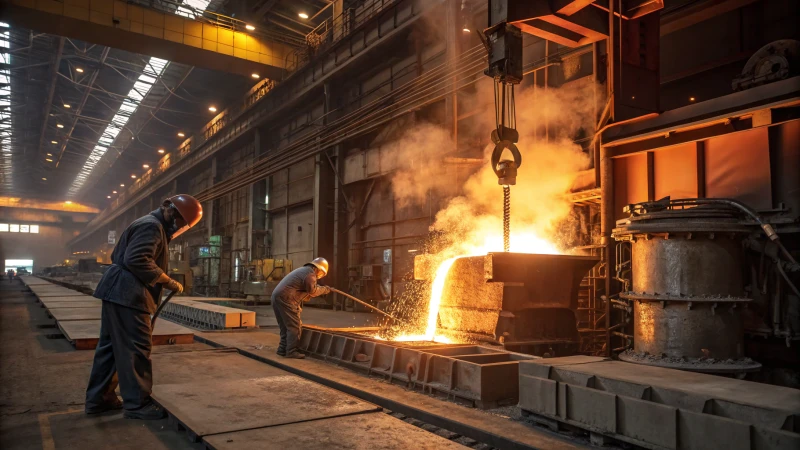
Ever wonder how steel wire ropes stand up to the heat in heavy machinery operations? Let’s unravel the mystery.
Steel wire ropes for heavy machinery are crafted to endure extreme temperatures by using specially treated steel or unique alloys. This ensures they remain reliable and safe in high-heat settings.
I remember the first time I had to choose steel wire ropes for a project—it felt overwhelming. But understanding the material composition and advancements in coatings really opened my eyes. These factors significantly impact how well these ropes perform and last, especially when exposed to harsh conditions. Let's explore how these elements play a role in their resilience.
Steel wire ropes can withstand temperatures over 200°C.True
Heat-treated steel and specialty alloys enable steel ropes to endure high temperatures.
All steel wire ropes are coated for temperature resistance.False
Not all ropes have coatings; some rely on material properties for heat resistance.
How Can I Improve the Temperature Resistance of Steel Wire Ropes?
Imagine a world where steel wire ropes can brave the fiercest temperatures without breaking a sweat.
To boost temperature resistance in steel wire ropes, I recommend heat-treated steel, specialty alloys like Inconel, and advanced coatings. These materials significantly improve durability and performance in extreme heat conditions.
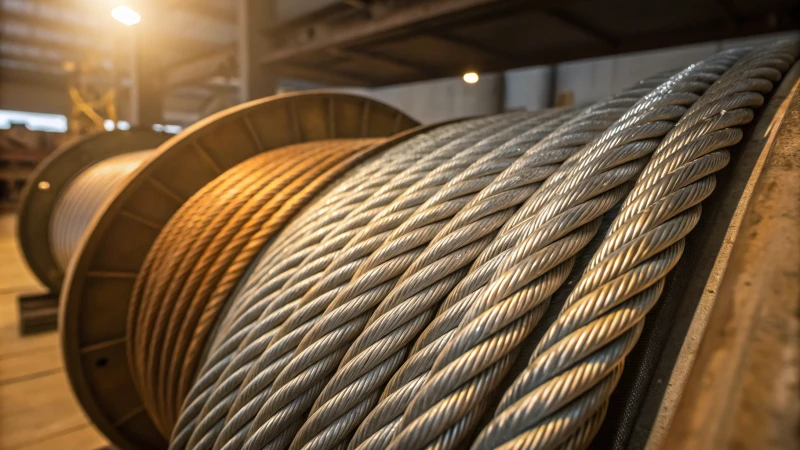
Heat-Treated Steel
In my early days of working with heavy machinery, I learned about the magic of heat-treated steel. It's like giving the metal a tough training session—heating it up and cooling it down just right to make it stronger against high temperatures. This modification enhances1 the steel's ability to withstand higher temperatures by altering its microstructure. I remember a project in the mining sector where we switched to heat-treated steel ropes, and the difference in resilience was remarkable. This approach is a game-changer for industries like mining and heavy machinery, where equipment faces relentless thermal challenges.
Specialty Alloys
When it comes to specialty alloys, Inconel stands out like a hero in hot environments. During a construction project near a high-temperature furnace, we opted for Inconel ropes and they performed impeccably, resisting oxidation and maintaining their strength. Alloys such as stainless steel 316 are also noteworthy, particularly in marine settings where both heat and corrosion are at play.
| Alloy | Temperature Resistance | Applications |
|---|---|---|
| Inconel | Up to 1300°F | High-temperature furnaces |
| Stainless Steel 316 | Up to 1600°F | Marine and chemical environments |
Advanced Coatings
Then there are advanced coatings, which I like to think of as the armor plating for our ropes. I once faced a situation where the ropes were constantly exposed to high heat in an industrial setting. Applying ceramic coatings not only extended their lifespan but also boosted safety by reducing wear and tear under thermal stress. The development of these advanced coatings2 has been pivotal in making ropes last longer and perform safer.
Comparisons and Considerations
Selecting the right material can sometimes feel like walking a tightrope—balancing cost, durability, and maintenance needs.
| Factor | Heat-Treated Steel | Specialty Alloys | Advanced Coatings |
|---|---|---|---|
| Cost | Moderate | High | Variable |
| Durability | High | Very High | High |
| Maintenance | Moderate | Low | Low |
Whether you’re in construction or oil and gas, understanding these material properties helps ensure the steel wire ropes you choose can withstand your industry's challenges. I always suggest consulting with suppliers who can offer insights tailored to your specific needs. Making informed choices like this has saved me countless times from potential mishaps on site.
Integrating these materials into our projects isn't just about enhancing durability—it's about making a commitment to safety and quality that withstands the toughest demands of modern industrial applications.
Heat-treated steel withstands higher temperatures.True
Heat treatment modifies the microstructure, enhancing temperature resistance.
Inconel alloys resist temperatures up to 1600°F.False
Inconel resists up to 1300°F; AISI 316 stainless steel reaches 1600°F.
How do temperature-resistant coatings improve rope durability?
Ever wonder how ropes brave the harshest temperatures? It's all about those savvy coatings!
Temperature-resistant coatings bolster rope durability by forming a protective barrier against extreme environmental conditions. These coatings minimize wear and tear, particularly in severe temperature settings, thus prolonging the rope's lifespan.
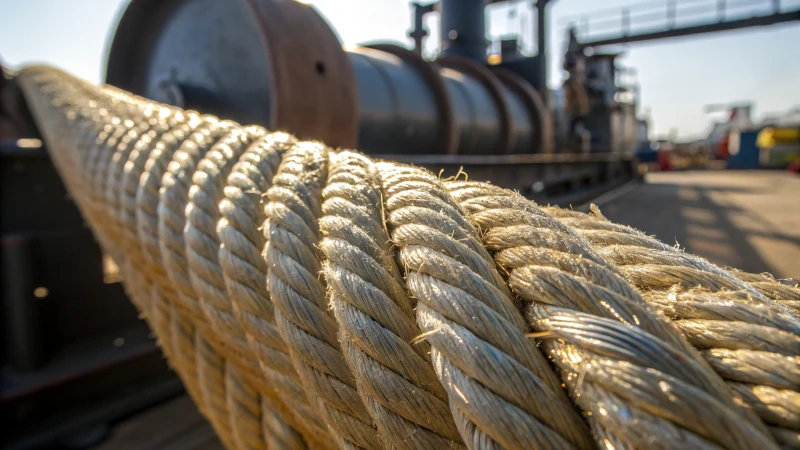
Understanding Temperature-Resistant Coatings
I remember the first time I learned about temperature-resistant coatings. It was during a construction project in the sweltering summer heat. I was curious about how the ropes we used could withstand such extremes. The secret, as it turned out, was the special coatings that acted like a superhero's shield, keeping the ropes in tip-top shape. These coatings are crafted from materials that can brave both scorching heat and biting cold, ensuring that the ropes remain sturdy and reliable.
The Science Behind Coatings
Picture this: it's a chilly morning, and you're out working with ropes. Without the right protection, these ropes could become brittle, risking a snap. Thankfully, coatings like polytetrafluoroethylene (PTFE) or silicone are here to save the day. They create a barrier, reducing the rope's exposure to temperature extremes, which helps in minimizing thermal expansion and contraction. This science-backed strategy keeps your ropes strong over time. Explore PTFE properties3 to see why it's a popular choice.
Benefits in High-Temperature Environments
In high-temperature scenarios, like when I oversaw a crane operation, I realized how crucial these coatings are. They help maintain the rope's tensile strength, preventing heat-induced brittleness—a key factor for safety and functionality in industries like industrial cranes4 and mining.
Application in Low-Temperature Settings
Conversely, I once managed a project in a freezing environment where ropes without proper coating became a nightmare—brittle and fragile. Temperature-resistant coatings add a flexible layer that keeps them elastic and crack-free, which is a lifesaver for cold region operations5.
Case Study: Mining Operations
I've seen firsthand how mining operations benefit from coated ropes. A study revealed that ropes with these coatings lasted up to 40% longer than their uncoated counterparts—saving costs and reducing downtime significantly. Learn more about mining benefits6.
Comparative Analysis
| Coating Type | Temperature Range | Key Benefits |
|---|---|---|
| PTFE | -200°C to 260°C | Chemical resistance, non-stick |
| Silicone | -60°C to 230°C | High flexibility, weather resistance |
| Epoxy | -30°C to 150°C | Strong adhesion, durability |
Enhancing Durability with Innovations
The world of rope coatings is constantly evolving. I often think about how future innovations could further enhance these materials to protect against even more environmental factors. Imagine adding UV resistance or anti-corrosive properties—those are the kinds of improvements on the horizon. Discover future trends7.
PTFE coatings withstand temperatures up to 260°C.True
PTFE coatings are known for their high temperature resistance, up to 260°C.
Silicone coatings make ropes brittle in cold environments.False
Silicone coatings maintain flexibility in cold, preventing brittleness.
Why Is Temperature Resistance Crucial in Heavy Machinery Applications?
You wouldn't believe the difference temperature resistance makes in heavy machinery—it’s the backbone of safety and performance.
Temperature resistance in heavy machinery is critical because it ensures safety, prevents material degradation, and maintains performance efficiency, especially in demanding industries like construction and mining.
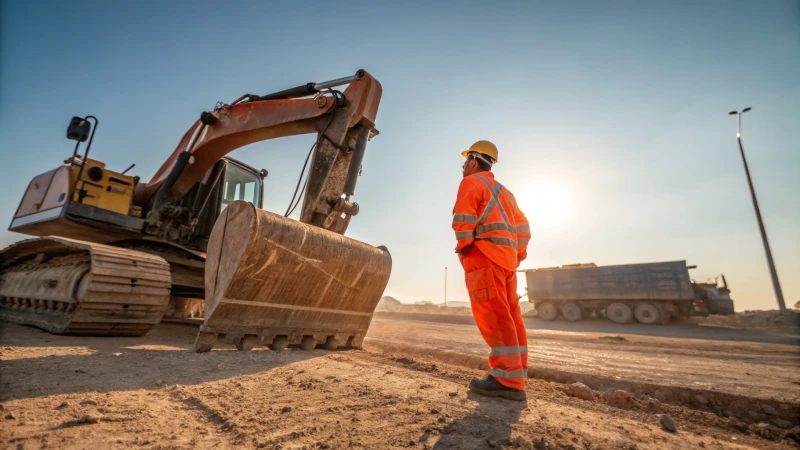
Impact of Temperature on Material Integrity
I remember the first time I learned about how temperature can wreak havoc on materials—back in my early days working with heavy machinery. High temperatures can cause materials to expand, leading to deformations or even failure. On the flip side, low temperatures might make them brittle. For instance, steel wire ropes8 used in cranes need to withstand these extremes to prevent accidents. Imagine being on-site and witnessing a wire rope snap—it’s a scenario I never want to relive.
| Temperature Condition | Potential Impact on Machinery |
|---|---|
| High Temperature | Material expansion, deformation |
| Low Temperature | Brittle failure, cracking |
Importance in Different Industries
Construction: As someone who's worked in construction, I've seen how essential temperature-resistant materials are. Equipment like bulldozers and cranes must work seamlessly whether it’s sweltering or freezing. These materials ensure everything stays functional, no matter the weather.
Mining: In mining, where I've sourced equipment, machines operate underground where temperatures can fluctuate wildly. Temperature-resistant coatings9 on equipment are lifesavers, preventing degradation and extending lifespans.
Manufacturing: I’ve also delved into manufacturing processes that involve high heat. Here, materials that resist temperature swings are vital for consistent production.
Advances in Temperature-Resistant Materials
Staying updated with the latest advancements is something I’ve always prioritized. New alloys and composites have taken machinery resilience to new heights. I’ve worked with heat-treated steel and specialty alloys that are now standard in high-durability applications. Innovations like advanced coatings10 offer extra protection by shielding equipment surfaces from extreme temperatures.
| Material | Application Example |
|---|---|
| Heat-treated Steel | Cranes, Lifting Equipment |
| Specialty Alloys | Mining Tools, Industrial Robots |
| Advanced Coatings | Surface Protection for Machinery |
By exploring these advancements, procurement managers like me can make informed decisions when selecting materials for specific applications. Understanding the importance of temperature resistance is crucial for safer and more efficient operations in any temperature-intensive environment.
High temperatures can deform machinery materials.True
High temperatures cause expansion, leading to deformation or failure.
Low temperatures strengthen steel wire ropes in cranes.False
Low temperatures cause brittleness, not strength, in materials.
How do you choose the right steel wire rope for extreme conditions?
Ever found yourself staring at a tangled mess of steel wire ropes, wondering which one will stand the test of extreme conditions?
Choosing the right steel wire rope for extreme conditions means focusing on material composition, coating options, and environmental challenges. Evaluate the rope's strength, flexibility, and durability in varying temperatures and corrosive environments to ensure safety and performance.
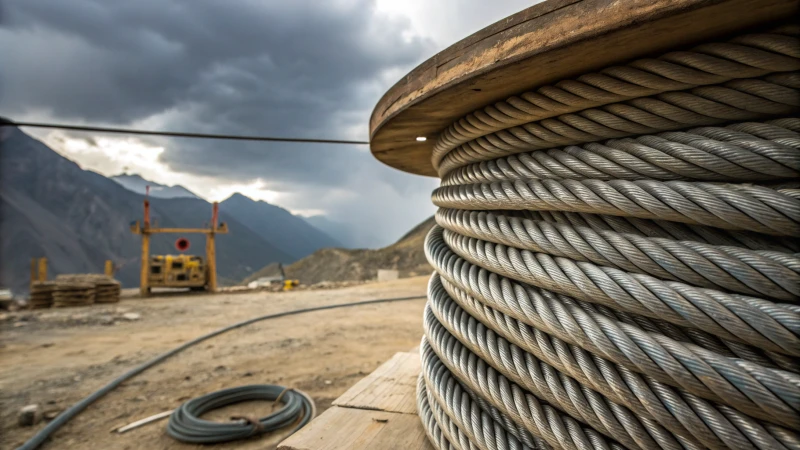
Understanding Material Composition
Steel wire ropes are made from various materials, each suited to different challenges. Heat-treated steel became my go-to for high-temperature scenarios—its toughness never failed me. On the other hand, when dealing with salty air and rust threats, stainless steel was my savior. It withstands marine conditions like a pro.
Evaluating Coating Options
The coating on a rope can be a game-changer. Imagine working on a site where everything is abrasive or exposed to chemicals; here, PVC or nylon coatings were life-savers, adding an extra layer of protection. Galvanized coatings offer basic resistance but sometimes just don't cut it.
| Coating Type | Benefits |
|---|---|
| Galvanized | Basic corrosion resistance |
| PVC/Nylon | Enhanced abrasion resistance |
Temperature Resistance
Extreme temperatures can make or break your operation. I've been caught in both freezing cold and scorching heat. For those icy days, low-temperature ropes with specialized alloys kept their flexibility, preventing brittle failures. Meanwhile, in sweltering conditions, heat-treated steel ropes were invaluable.
- Low-temperature ropes: Remain flexible in the cold.
- High-temperature ropes: Maintain their strength under heat.
Strength and Flexibility
Balancing strength and flexibility is a puzzle I often face. The tensile strength11 needs to match the load requirements perfectly. Flexible ropes have been my allies when facing dynamic movements—they reduce fatigue and adapt beautifully.
Corrosion Resistance
In humid or chemical-heavy environments, avoiding corrosion is non-negotiable. Stainless steel ropes often saved my projects, especially around saltwater—no rust worries there!
Choosing the Right Supplier
Finding a supplier who understands these nuances is crucial. I've learned to value those who provide robust technical support and stick to tight schedules. Customer reviews often paint a clear picture of reliability and after-sales service quality.
- Evaluate the supplier's ability to offer after-sales services and support.
- Check customer reviews and testimonials for insights into supplier reliability.
Choosing the right rope isn't just about specs; it's about anticipating challenges and preparing accordingly. Dive into this resource12 to explore materials designed for tough environments and ensure your project's success.
Heat-treated steel ropes resist high temperatures well.True
Heat-treated steel enhances durability in high-temperature environments.
Galvanized coatings provide advanced chemical resistance.False
Galvanized coatings offer basic corrosion resistance, not advanced chemical protection.
Conclusion
Steel wire ropes for heavy machinery are engineered to withstand extreme temperatures through heat treatment, specialty alloys, and advanced coatings, ensuring durability and safety in demanding environments.
-
Exploring this link will provide insights into why heat-treated steel is preferred in mining for its durability under extreme conditions. ↩
-
This link offers information on various coating technologies that protect steel ropes from high temperatures and extend their life span. ↩
-
Understanding PTFE's properties will provide insights into its effectiveness in temperature-resistant applications. ↩
-
This link explains the conditions that make temperature resistance crucial for crane operations. ↩
-
Explore why low temperatures affect machinery performance and how coatings help. ↩
-
Discover how coated ropes extend lifespan and improve efficiency in mining. ↩
-
Explore advancements in coating technology that enhance rope durability. ↩
-
Learn how temperature impacts steel wire ropes and their importance in heavy machinery. ↩
-
Discover how temperature-resistant coatings enhance machinery performance and longevity. ↩
-
Explore innovations in coatings that provide superior protection against extreme temperatures. ↩
-
Learn about tensile strength, crucial for ensuring wire ropes meet load requirements in harsh conditions. ↩
-
Discover materials suited for harsh environments, helping you choose the right wire rope. ↩

